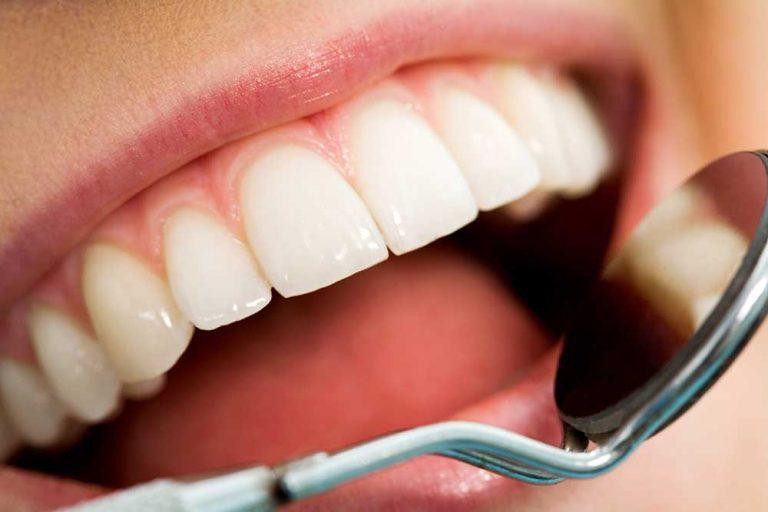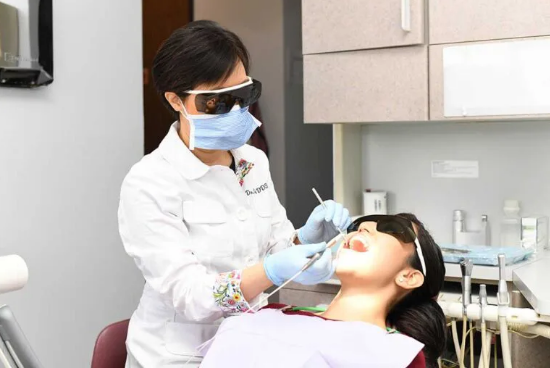Periodontal disease is also called gum disease. It is a set of inflammatory conditions that affect the tissues surrounding the teeth. The primary stage is called gingivitis. In this stage, the gums are swollen, red. It may cause bleeding. When it reaches in serious form, it is called periodontitis.
In this disease there is a possibility of the tooth pulling away from gums, bones may be lost and teeth may fall out. The problem of bad breath may occur.
If you have high-level periodontitis, you will require Periodontal treatment which includes dental surgery such as:
Flap surgery (pocket reduction surgery). In this treatment, your dentist makes small cuts in your gum so that a part of gum tissue can be lifted back. That will expose the roots for more effective scaling and root planing.
How to Diagnosis?
To know whether you have periodontitis and how severe this is, your dentist may:
The dentist can review your medical history so that he/she can identify the real cause behind it. There can be various factors like smoking, or taking some specific medications which lead to periodontitis.
The dentists will examine your mouth to find out whether plaque and tartar are building up inside your mouth or if there is any gum bleeding.
They will measure the depth of the pocket to know the groove between your gums and teeth by keeping a dental probe beside your tooth under your gumline.
The pocket depth in a healthy mouth is generally between 1 and 3 millimeters (mm). If the pocket depth is deeper than 4 mm, it may indicate periodontitis. And Pockets deeper than 5 mm are difficult to be cleaned well. The dentist will take dental X-rays to check for bone loss or for observing whether you have deeper pocket depths. After that he/she can decide the stage based on the severity of the disease, the complexity of treatment, your risk factors, and your health.
How to treat Periodontitis?
The main objective of periodontitis treatment is to clean the holes thoroughly around teeth and prevent damage to the enclosing bone. If you adopt a daily routine of good oral care or try to manage health conditions that may impact dental health and stop doing bad habits like tobacco you can get successful results. There are also available nonsurgical treatments like scaling, root planning, taking antibiotics..etc.
Gum Contouring
Gum contouring is a cosmetic procedure that is helpful in changing the shape of your gums. Dentists can use this procedure to cut away an extra part of gum tissue that is making your smile hard to shine. It will restore gum tissue that has started receding and is now exposing too much of your teeth.
If you feel that the size of your gums are too large or they have receded and are too small, schedule an appointment with a dental hospital. Dentists can examine you and suggest what treatment can be best for you.
In the case of gum receding, treatments can be:
The first treatments for gum receding can be scaling and root planning recommended by a professional. Other than that they can suggest gum graft surgery if your gums are severely receding.
This also depends on the type of tools used to complete the procedure. When a scalpel is used for gum contouring, stitches will be necessary and that will cause more irritation. often, the gums can be treated without cutting or stitches, with lasers.
It may happen that you will feel some swelling and discomfort after the procedure. You can recover from it easily by applying ice packs to your face for 15 minutes or can take ibuprofen.
Gingivectomy is a dental procedure in which an oral surgeon cuts away from an extra part of the gums in the mouth. It is the oldest type of dental surgery in periodontal treatment and is mostly done for the improvement of aesthetics or prognosis of teeth.
After removing the pocket wall, gingivectomy provides visibility and accessibility for complete teeth tartar removal and complete smoothing of the roots. Also, it creates a favorable situation for gingival healing and restoration of a physiologic gingival contour. The treatment is done so that admittance to the region of sub-gingival caries or crown margins is permitted. The main reason behind the gingivectomy is to reduce the gingival overgrowth also known as a gummy smile.
Article Source : https://specialist-dentist-in-katy.blogspot.com/2021/01/what-happens-in-gingivectomy.html
Contact Us :
Nottingham Dental
20501 Katy Fwy #104, Katy, TX 77450, United States
https://g.page/nottingham-dental-katy?share
Call us at (281) 578-0211
visit https://www.nottinghamdent.com/ to Book your dental appointment online.








Comments